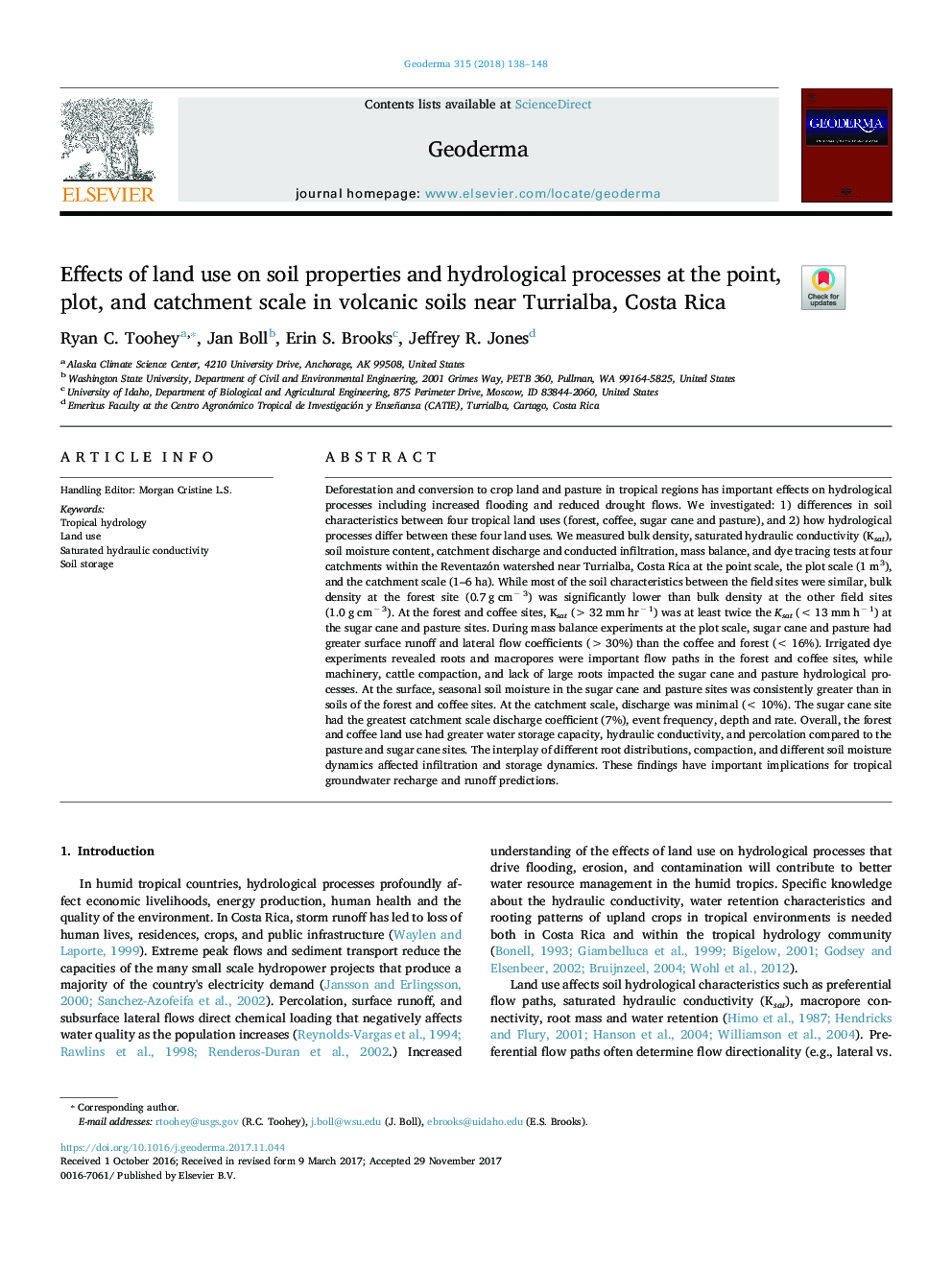| کد مقاله | کد نشریه | سال انتشار | مقاله انگلیسی | نسخه تمام متن |
|---|---|---|---|---|
| 8894274 | 1629402 | 2018 | 11 صفحه PDF | دانلود رایگان |
عنوان انگلیسی مقاله ISI
Effects of land use on soil properties and hydrological processes at the point, plot, and catchment scale in volcanic soils near Turrialba, Costa Rica
ترجمه فارسی عنوان
تأثیر استفاده از زمین بر خواص خاک و فرآیندهای هیدرولوژیکی در مقیاس نقطه، طرح و حوضه در خاک های آتشفشانی در نزدیکی تورریالبا،
دانلود مقاله + سفارش ترجمه
دانلود مقاله ISI انگلیسی
رایگان برای ایرانیان
کلمات کلیدی
هیدرولوژی گرمسیری، استفاده از زمین، هدایت هیدرولیکی اشباع شده، ذخیره سازی خاک،
موضوعات مرتبط
مهندسی و علوم پایه
علوم زمین و سیارات
فرآیندهای سطح زمین
چکیده انگلیسی
Deforestation and conversion to crop land and pasture in tropical regions has important effects on hydrological processes including increased flooding and reduced drought flows. We investigated: 1) differences in soil characteristics between four tropical land uses (forest, coffee, sugar cane and pasture), and 2) how hydrological processes differ between these four land uses. We measured bulk density, saturated hydraulic conductivity (Ksat), soil moisture content, catchment discharge and conducted infiltration, mass balance, and dye tracing tests at four catchments within the Reventazón watershed near Turrialba, Costa Rica at the point scale, the plot scale (1 m3), and the catchment scale (1-6 ha). While most of the soil characteristics between the field sites were similar, bulk density at the forest site (0.7 g cmâ 3) was significantly lower than bulk density at the other field sites (1.0 g cmâ 3). At the forest and coffee sites, Ksat (> 32 mm hrâ 1) was at least twice the Ksat (< 13 mm hâ 1) at the sugar cane and pasture sites. During mass balance experiments at the plot scale, sugar cane and pasture had greater surface runoff and lateral flow coefficients (> 30%) than the coffee and forest (< 16%). Irrigated dye experiments revealed roots and macropores were important flow paths in the forest and coffee sites, while machinery, cattle compaction, and lack of large roots impacted the sugar cane and pasture hydrological processes. At the surface, seasonal soil moisture in the sugar cane and pasture sites was consistently greater than in soils of the forest and coffee sites. At the catchment scale, discharge was minimal (< 10%). The sugar cane site had the greatest catchment scale discharge coefficient (7%), event frequency, depth and rate. Overall, the forest and coffee land use had greater water storage capacity, hydraulic conductivity, and percolation compared to the pasture and sugar cane sites. The interplay of different root distributions, compaction, and different soil moisture dynamics affected infiltration and storage dynamics. These findings have important implications for tropical groundwater recharge and runoff predictions.
ناشر
Database: Elsevier - ScienceDirect (ساینس دایرکت)
Journal: Geoderma - Volume 315, 1 April 2018, Pages 138-148
Journal: Geoderma - Volume 315, 1 April 2018, Pages 138-148
نویسندگان
Ryan C. Toohey, Jan Boll, Erin S. Brooks, Jeffrey R. Jones,
